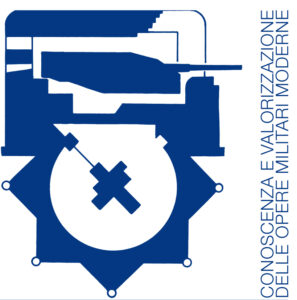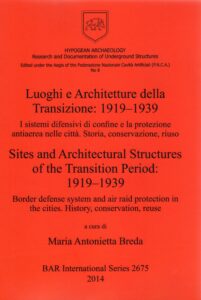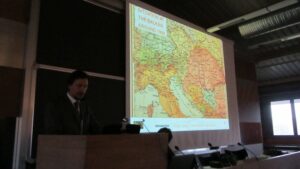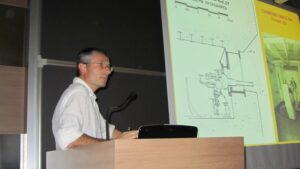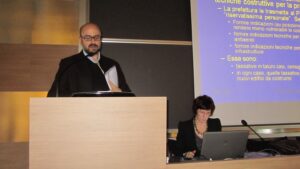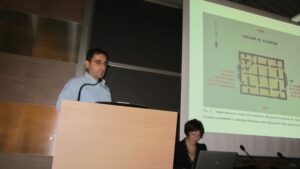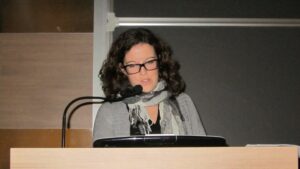KNOWLEDGE AND DEVELOPMENT OF MODERN MILITARY STRUCTURES – II
Sites and architectural structures of the transition period: 1919 – 1939.
Luoghi e architetture della transizione: 1919 – 1939.
I sistemi difensivi di confine e la protezione antiaerea nelle città
Storia, conservazione e riuso
Border defense systems and air raid protection in the cities
History, conservation and reuse
II Congresso Internazionale a cura di Maria Antonietta Breda
2nd International Congress by Maria Antonietta Breda
27 – 28 Novembre 2012 – ore 9.00 – 18.30
Politecnico di Milano – via Durando 10 Milano – Campus Bovisa – Aula Castiglioni edificio PK
November 27 – 28, 2012 – 9:00 AM – 6:30 PM
Politecnico di Milano – Via Durando 10, Milan –Bovisa Campus – Castiglioni Room PK building
Presentazione
1919 – 1939. La Grande Guerra si è conclusa, ma i trattati per la pace non diminuiscono le disparità economiche preesistenti tra gli Stati. La storiografia dell’epoca riconosce che proprio in quei patti vi è la genesi del secondo conflitto mondiale. Nonostante da più parti si invochi la pace e si confidi nelle capacità diplomatiche per risolvere le crisi tra gli stati, sul territorio europeo tutte le nazioni rafforzano e completano i propri sistemi difensivi di confine. Inoltre, coscienti che l’arma aerea, già usata durante il primo conflitto, potrebbe trasformare le città in campi di battaglia, si impongono provvedimenti per la protezione collettiva della popolazione civile delle grandi città e dei centri vitali. La protezione individuale contro la guerra chimica è definita “arte demoniaca dei veleni sottili e silenziosi” (Djalma Juretigh 1932).
Con il II Congresso Internazionale conoscenza e valorizzazione delle opere militari moderne – Knowledge and Development of modern military structures, si desidera esporre le caratteristiche tecniche delle opere militari e civili, tuttora esistenti in Italia e in alcuni paesi europei. Essere furono costruite ai fini della difesa delle frontiere e della protezione delle popolazioni. Si vuole inoltre contestualizzarne la valenza nel coevo panorama storico-politico. S’illustreranno le recenti esperienze di valorizzazione e riuso delle opere militari anche da parte di associazioni. Si rifletterà sul ruolo contemporaneo della museografia per la trasmissione al futuro del patrimonio storico militare e del suo “carico” di memoria.
Per quanto riguarda il patrimonio militare autorevoli studiosi, autori di numerose pubblicazioni, presenteranno: il “Vallo Alpino” costruito in Italia lungo tutta la catena alpina (Bagnaschino per il settore delle Alpi occidentali al confine francese; Bernasconi e Collavo per il settore Alto Adige, Cadore, Carnia e Tarvisiano; Mariantoni per il contesto geopolitico); i piani di fortificazione e le opere permanenti che furono costruite dall’Italia dalla 3ª guerra d’indipendenza allo scoppio della 2ª guerra mondiale al confine est (Malatesta); la Linea Maginot delle Alpi, sistema difensivo adottato dalla Francia nel primo dopoguerra, a tutela dei suoi confini occidentali (Bagnaschino); il sistema di fortificazione costruito dal Regno di Jugoslavia lungo il mare Adriatico (Pachauer); il recupero di Forte Bramafam, la più importante fortificazione delle Alpi Cozie di fine 800 con ruolo militare fino al 1945, ad opera di un’associazione di volontariato culturale (Corino); il ruolo del museo per la valorizzazione del patrimonio storico militare, materiale ed immateriale (Zadra).
Per quanto attiene all’argomento della protezione antiaerea si presenteranno i programmi di protezione antiaerea della Gran Bretagna: L’Air Raid Precautions britannica (Bernard) e di alcune regioni italiane. In particolare per l’Italia saranno analizzate le città di: Milano, Torre delle Sirene e altri rifugi antiaerei cittadini confrontati con altre realtà italiane (Padovan) e il rifugio antiaereo di Piazza Grandi (Bonfanti); Como (Fumagalli), Monza (Breda), Piacenza (Conte); Golfo della Spezia: le gallerie sotterranee ed altre tipologie di ricoveri, nel territorio cittadino e limitrofo ad uso della popolazione civile e militare (Ognibene).
Presentation
1919 – 1939. The Great War is over, but peace treaties do not reduce the economic disparities between States. The historiography of this period has shown that these treaties are one of the main causes of the Second World War. Although many invoked peace and trusted diplomacy to solve diplomatic crisis between States, all nations across Europe strengthened and completed their border defense systems. In addition, aerial warfare, born during the First World War, could potentially transform cities into battlefields. Therefore, new measures for the protection of the civilian population of cities and strategic points became necessary; personal protection equipment against chemical warfare was defined “demonic art of subtle and silent poisons” (Djalma Juretigh 1932).
The 2nd International Congress Knowledge and development of modern military structuresonoscenza e valorizzazione delle opere militari moderne – Knowledge and Development of modern military structures, will present the technical characteristics of military and civil works, still existing in Italy and other European countries, built for the defense of the borders and the protection of populations. The aim of the congress is to contextualize the significance of such works in the contemporary historical and political landscape. Recent experiences of valorization and reuse of these military works by associations will be presented, as an introduction to some reflections about the role of contemporary museums in the transmission to the future generations of our military heritage and its “load” of memory.
The military heritage will be presented by scholars and authors of numerous publications. The Italian “Vallo alpino” of the Alps border will be presented by Bagnaschino for the sector of the Western Alps to the French border; Bernasconi and Collavo for the South Tyrol, Cadore, Carnia and Tarvisio; Mariantoni for to the geopolitical context. Other work include the fortification plans and permanent works built in Italy between the 3rd Independence War and the outbreak of the Second World War on the eastern border (Malatesta); the French Maginot Line in the Alps, adopted by France after the war, in defense of its western borders (Bagnaschino); the fortification system built by the Kingdom of Yugoslavia along the Adriatic Sea (Pachauer); the restoration by an association of volunteers of Forte Bramafam, the most important fortress in the Cottian Alps at the end of 19th century with a military role until 1945 (Corino), the role played by museums in the enhancement of the material and immaterial military heritage (Zadra). The air defense system will present the situation in Great Britain throughout a story of the role of the Air Raid Precautions organization (Bernard). Italian situation will be presented throughout the cases of the Torre delle Sirene and other air-raid shelters compared to other Italian cities (Padovan), the case of the air-raid shelters of Piazza Grandi (Bonfanti), Como (Fumagalli), Monza (Breda) , Piacenza (Conte), the Gulf of La Spezia and the underground tunnels and other types of shelters within the city and neighboring towns for civilian and military use (Ognibene).
SIGLA II CONGRESSO 2012_definitiva
